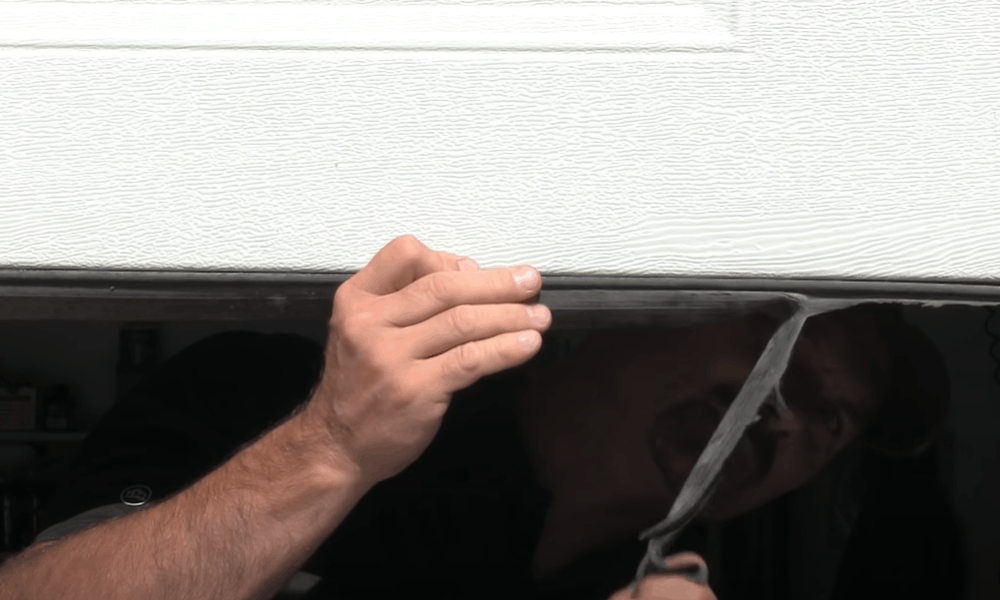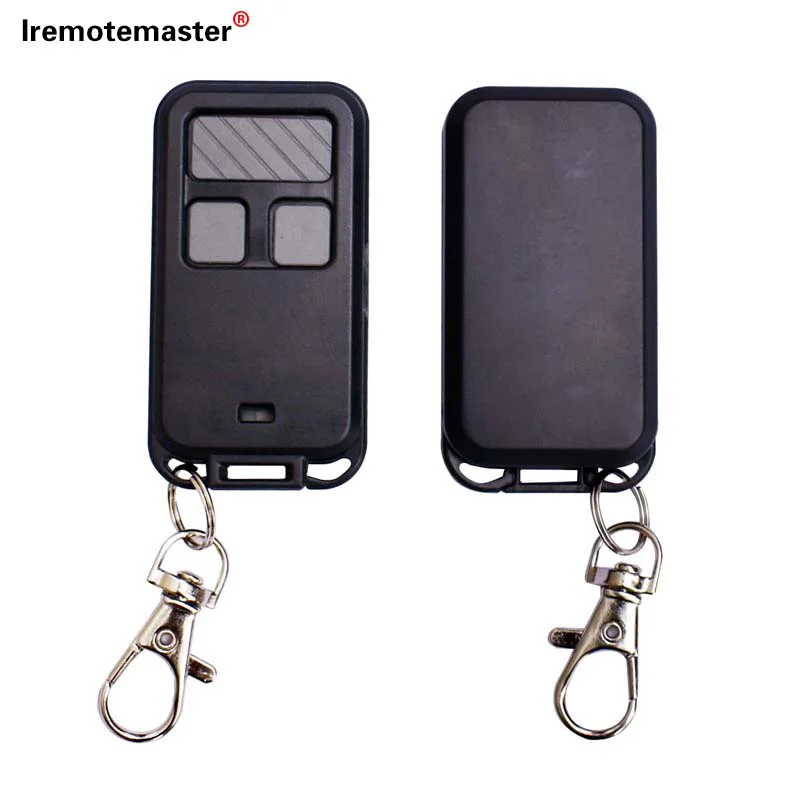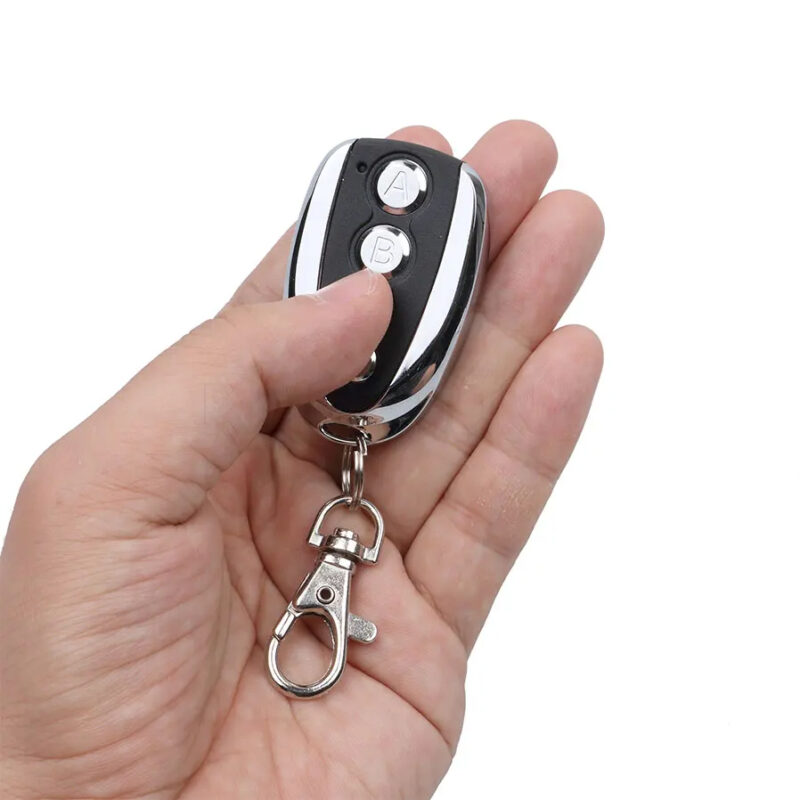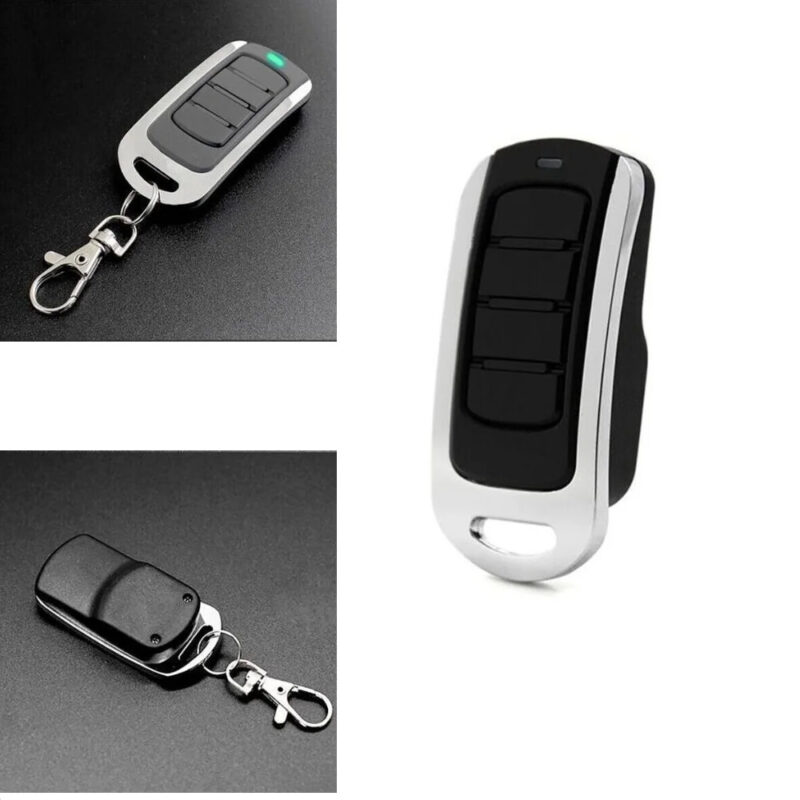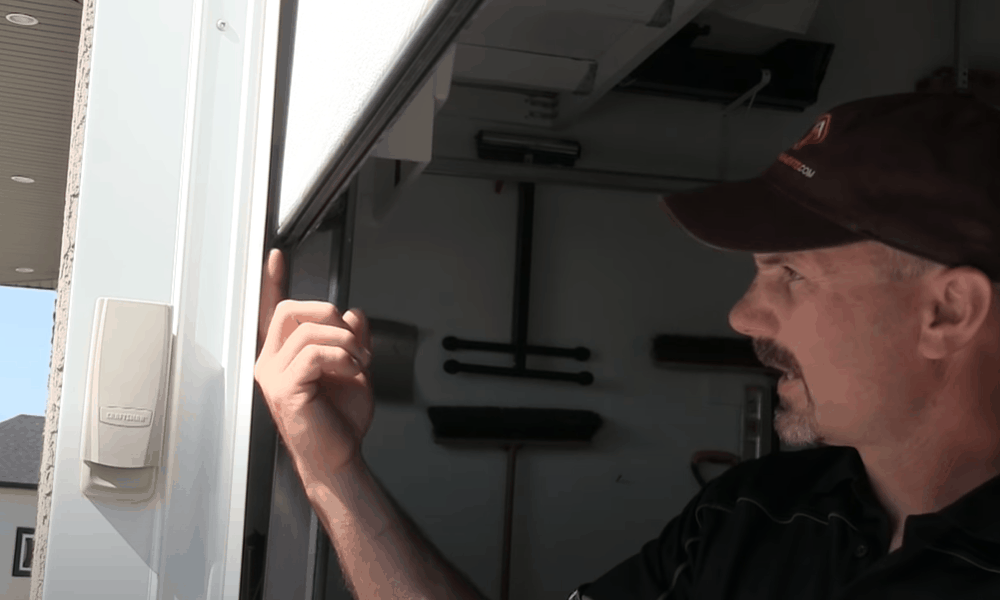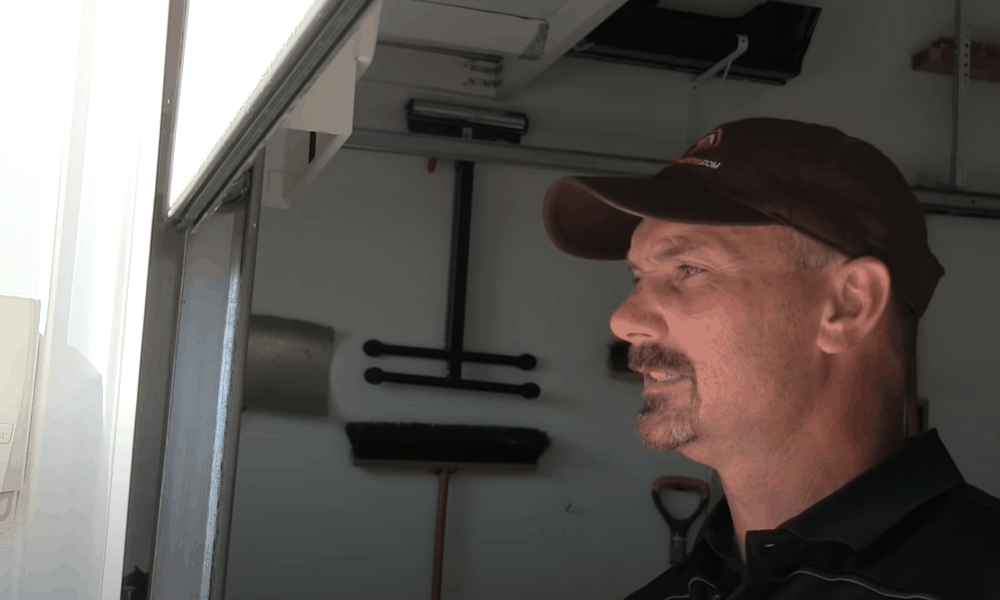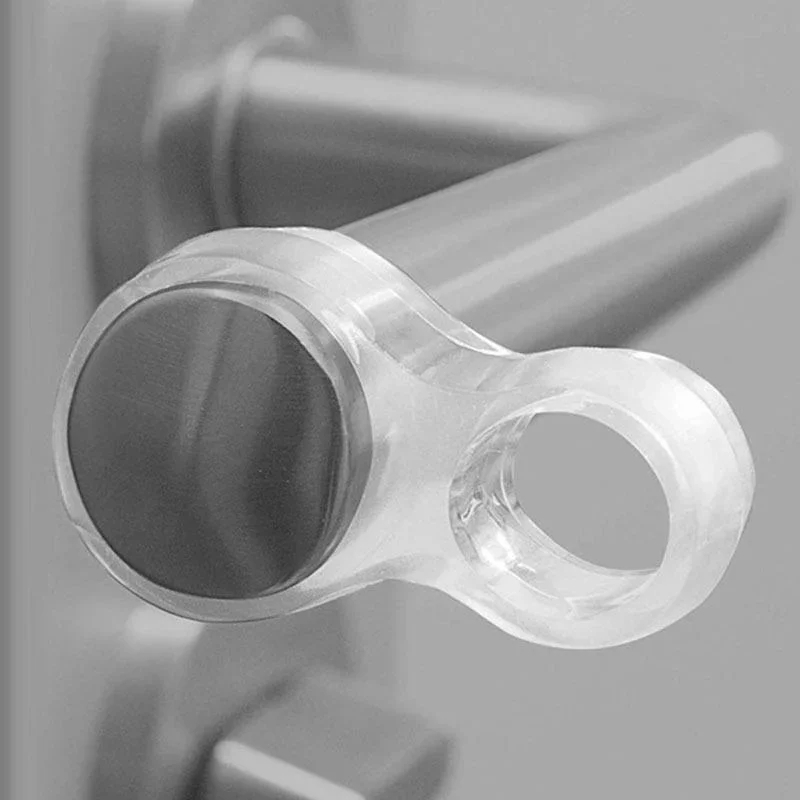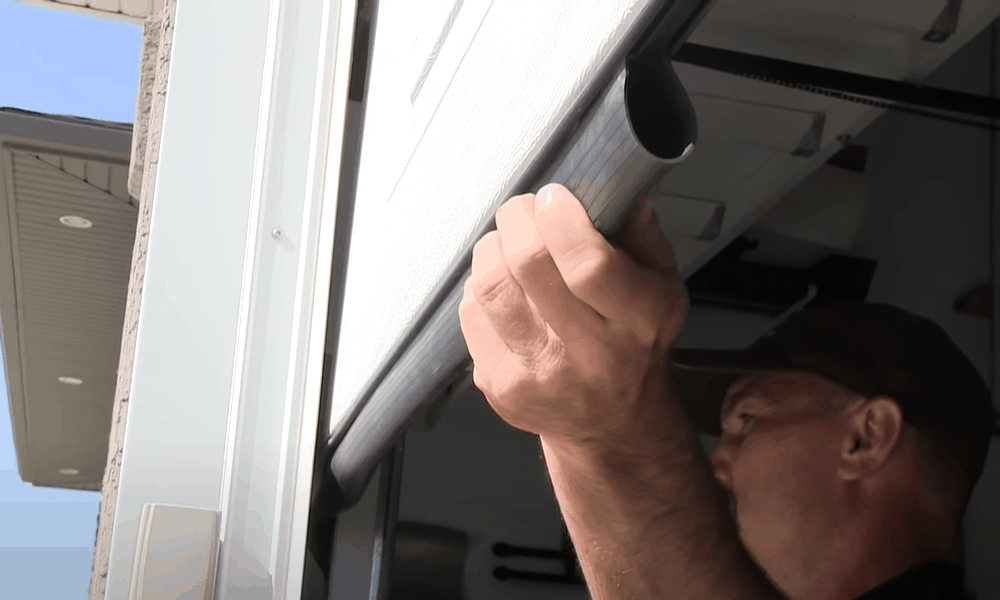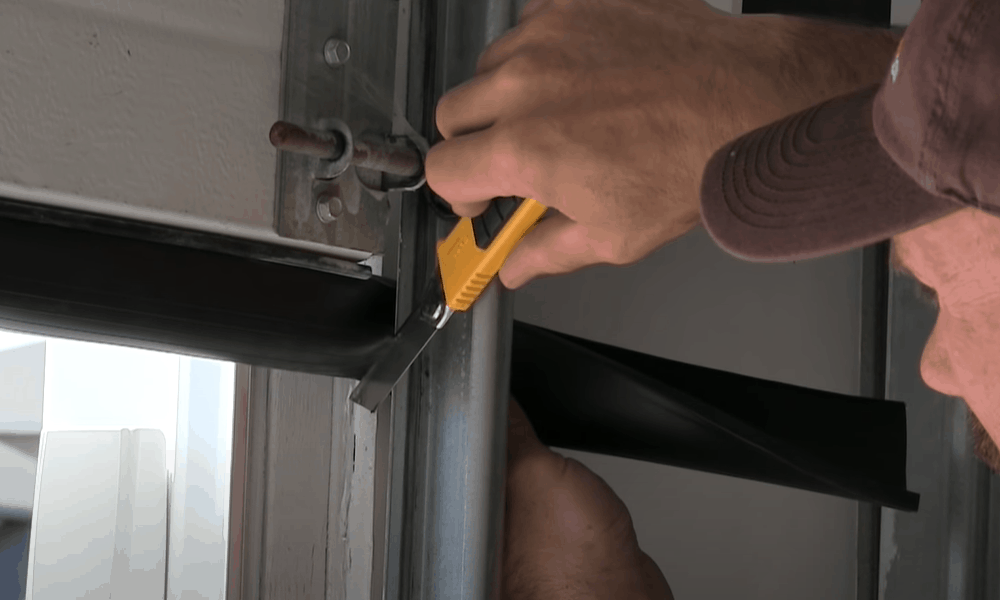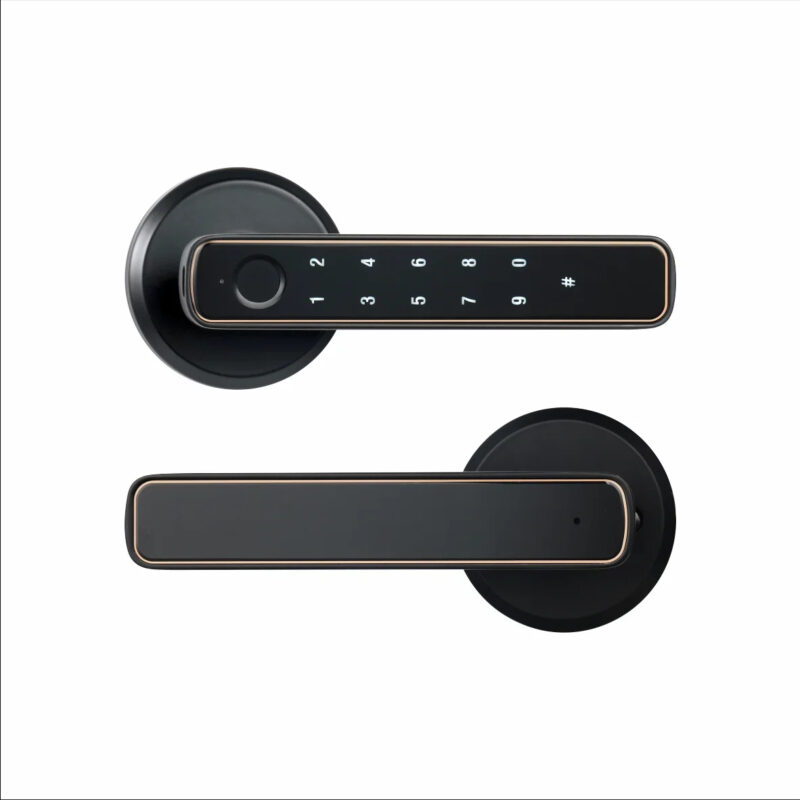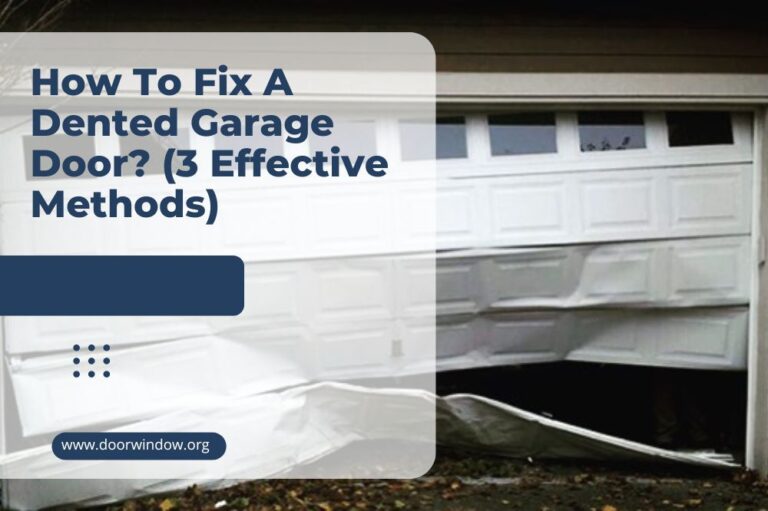8 Steps to Replace a Garage Door Seal
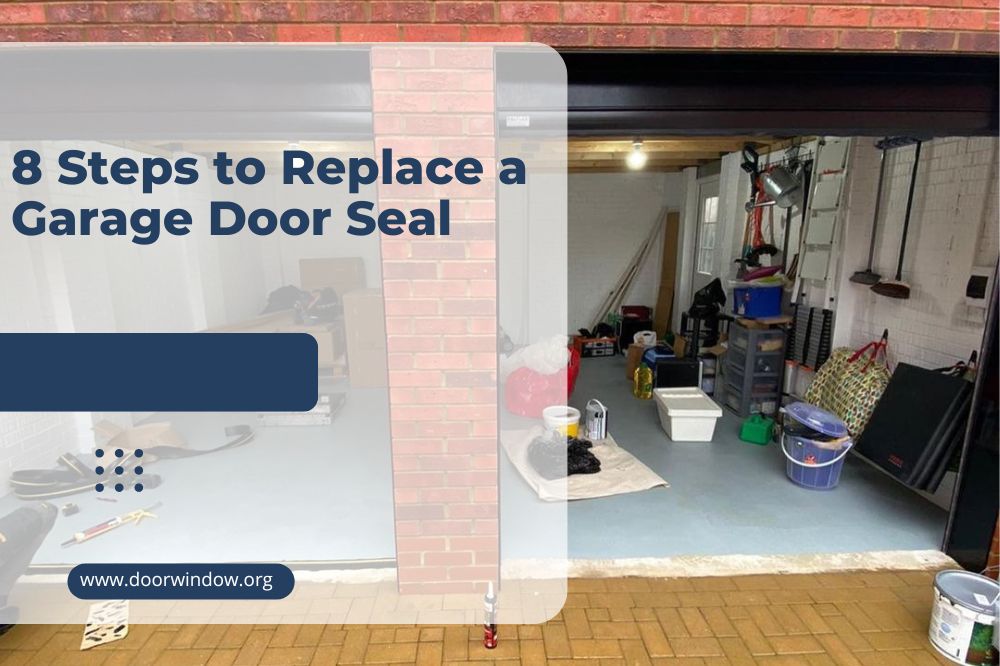
Your garage door is probably the largest opening to any indoor area in your home. That makes keeping it weatherproof essential.
The seal at the bottom of the door is the one that experiences most wear and tear. Heat, rain, snow, ice or even salt on the ground can all cause the rubber to deteriorate over time. If that happens, the contents of your garage become vulnerable too.
But don’t worry – fixing the problem isn’t as hard as you might think. We’re going to show you how to replace a garage door seal in eight easy steps.
So let’s get started!
Tools for replacing garage door seal
- New door seal
- Measuring tape
- Flathead screwdriver
- Phillips head screwdriver
- Sweeping brush
- Bar of soap, wax candle or silicone spray
- Utility knife
- Someone to help
If you have a wooden garage door:
- Wood sealer
- Hammer
- Nails
- Aluminum track and caulk (optional – but if you buy these, you won’t need nails)
How to replace a garage door seal
Step 1: Buy the correct door seal for the job
Before you head to the shops to buy your new door seal, you’ll need to measure your garage door. We’re going to focus here on changing the bottom seal. For this, you’ll need to measure the width and thickness of the door. If you need to replace the seal all the way around, measure the height too.
Now consider what kind of door seal to buy. Most door seals are made of rubber, and these will give a reasonable service in most climates. But if you live in an area prone to cold winters, consider a silicone seal instead. These are designed to withstand low temperatures and will last far longer.
Pro tip: Write down each measurement as you go, then repeat the process to check you haven’t made any mistakes. You don’t want to go through the whole installation process before discovering your new seal doesn’t fit!
Step 2: Check for screws holding the existing door seal in place
Whether you have a metal or wooden garage door, you may find the existing bottom seal is screwed into place. If it is, there’ll usually be just one screw at either end.
Take a close look at the ends of the seal. If you find screws, use the appropriate screwdriver to remove them. The screws are usually quite short, so this won’t take long to do.
Step 3: Remove the old door seal
The process for removing the old door seal will depend on whether your garage door has a bottom track. Metal garage doors usually have a track, whilst wooden ones often don’t.
If your garage door doesn’t have a track, your existing door seal will probably have been nailed in place. If that’s the case, take a firm grip at one end of the seal, and pull it free. With a sharp tug, the nails should come straight out. If there are any stubborn ones, prise them free with your hammer.
If you have a door with a track, you may be able to pull very degraded seals free. In most cases, though, you’ll need to slide the seal along the track and out the end. Depending on what condition it’s in, you may find you need to remove it in several fragments.
If you find the seal gets stuck, use your flathead screwdriver to bend the track and help it slide along.
Pro tip: You can give yourself more room to work by releasing the bottom rollers on your garage door. Use pliers to flare open the side track below each roller. Then lower the door so the roller is level with the widened section of the track. Place the end of a flathead screwdriver behind the roller and lever it free.
Step 4: Prepare the door for its new seal
Once the old seal has gone, clean out any remnants that are sticking to the door.
If your old seal was nailed to a wooden garage door, removing it will have left you with nail holes. Fill these in with wood filler.
If you have a track already, this is the time to clean it out. Take your brush and give it a good sweep. Removing dirt and debris will make it much easier to install the new seal.
If your door doesn’t already have an aluminum track, you may want to consider purchasing and installing one. They aren’t too expensive. And more importantly, there’ll be no nail holes to fill next time you have to replace your door seal.
Once you’ve bought your track, cut it to the width of your garage door. Then cut notches to fit around the rollers at the side of the door. Place a thick dollop of caulk on the leading edge of the door. Then attach the track set-up. You’re now ready to install your new seal without nails.
Step 5: Prepare your work station
Remember: seals need to be tight in order to keep out weather and debris. That means you’re probably going to need to spend a bit of time on this part of the process. Get yourself a coffee before you start!
Make sure the door is at a comfortable height to work at. Having the lower edge just above eye level will mean you’re able to see what you’re doing more easily. And you won’t have to reach right above your head to maneuver the door seal into place.
Step 6: Begin to secure your new seal
If you don’t have a track, attaching the new seal simply means hammering it into place. You’ll need to take your time over this. The seal needs to be installed in exactly the right position, and to be level all the way along the door.
If you have a track, take a good look at it. There’ll be two grooves running along it. These are where the t-shaped sections of the rubber seal will go.
Lubricate the end of the track to help feed through the rubber seal. Silicone spray works very well for this. Alternatively, you can rub the track with a bar of soap or the end of a wax candle.
Now fold the seal widthways so that you can insert the two t-shaped pieces into the end of the track. Fold the end of the seal you’re feeding in with one hand. Use your other hand to hold the rest of the seal level. If it hangs down, it will pull on the section you’re trying to feed onto the track.
Keep sliding the seal across. Keep holding the front edge in one hand whilst holding the rest of the seal level with the other. When the front edge is too far along the door for you to keep holding onto the unthreaded portion, stop. This is where your friend comes in!
Pro tip: If your old seal was screwed in place, you may find the end section of the track is squashed. That will make it difficult to feed in the new seal. Use a flathead screwdriver or the blade of a knife to open it up again.
Step 7: Finish sliding in the rest of the seal
Get your friend to hold the portion of the seal that hasn’t yet been threaded into the track. They should hold it level with the track and folded widthways. This will allow the t-shaped sections to continue sliding into the track as you pull it along the door.
You may find that when you get to the far end, the track needs some attention. If the old seal was screwed into place, you’ll need to open out the squashed track again. The process is exactly the same as for the other end of the track. Use your flathead screwdriver or the end of a knife to open it back out.
Step 8: Trim off any excess seal
When the seal is all the way across your door, add a screw at either end to keep it secure.
Now use your utility knife to trim off any extra rubber. You can trim it so that it’s flush with the edge of the door. Alternatively, trim it flush with the side of the opening. The choice is yours.
You’ve finished. Take a step back and admire your new door seal!
Extra tips
If you can replace your door seal on a warm day, the rubber will be more pliable. That will make the job much easier. If that’s not an option, soak the seal in warm, soapy water before installation. You’ll find it slides into place more easily.
If your door seal isn’t lying completely flat all along the width of your opening, don’t worry. You can buy something called foam rope. This comes in different sizes and can be threaded along inside the bottom of the seal. It will make the seal more rigid so that it doesn’t crease.
Ready for your new door seal?
We hope you’ve enjoyed our guide to how to replace a garage door seal! It’s not a complicated job, but get someone to help you if you can. It’s much easier to maneuver the seal with an extra pair of hands.
If this is a project you’ve already carried out, why not comment and tell us how it went? We’d love to hear from you!


